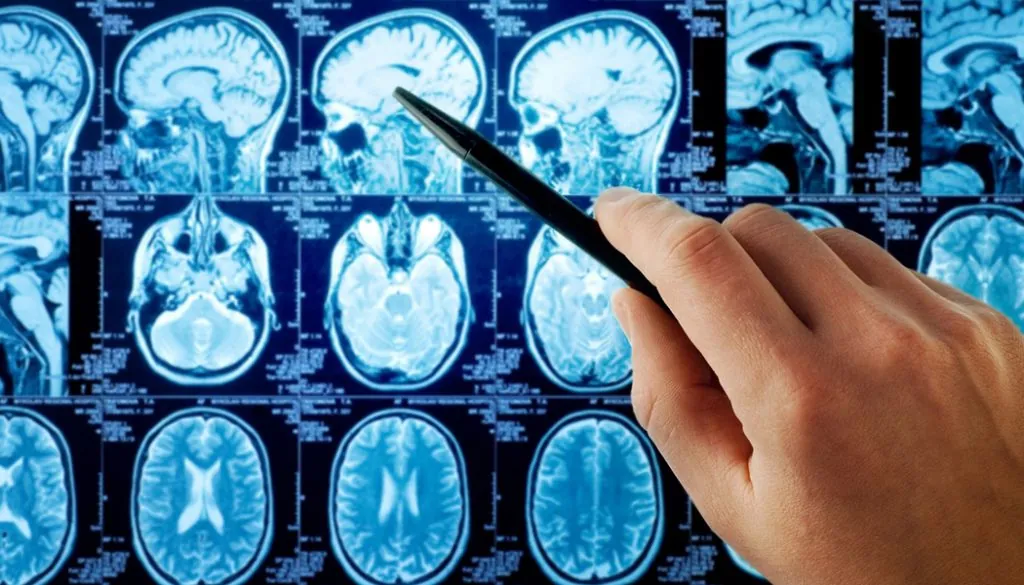Showing Promise: Confronting Brain Cancer in the Lab

Any brain cancer surgery carries significant risk. For one, post-procedural swelling can be deadly. Doctors must also take into account the size of the tumor, its type and grade, the location and whether or not it is pressing against a vital part of the brain. Moreover, the brain is the source of identity: alter it and the patient can wake up a very different person. Even if a tumor is successfully removed, the patient may suffer side effects, including seizures, weakness, vertigo and speech problems whose recoveries can take a significant amount of time.
May is Brain Cancer Awareness Month, and it is worth noting several recent promising discoveries —and alternatives to surgery—that research has made possible.
Gene Therapies
- Autophagy is a natural biological process in which cells rid themselves of unnecessary or dysfunctional components. It can be toxic to the cells, or it can serve a protective role. A team led by National Foundation for Cancer Research Fellow Paul Fisher, M.Ph., Ph.D., and Scientific Advisory Board Chairman Webster Cavenee, Ph.D., demonstrated that protective autophagy allows glioma stem cells to resist anoikis, which is a form of programmed cell death. The study found that this protective mechanism is regulated by the gene MDA-9/Syntenin. Researchers found that if the expression of MDA-9/Syntenin is blocked, glioma stem cells lose their ability to induce protective autophagy and succumb to anoikis, resulting in cancer cell death. The discovery could lead to new therapies against glioblastoma, the deadliest form of cancer in humans.
- A team of doctors at Cincinnati Children’s Hospital Medical Center identified a gene that helps glioblastoma, a pediatric brain cancer, turn other cells cancerous. By injecting molecules that target the gene, the researchers significantly slowed down the rate of tumor cell growth and spread in mice models. Although not a cure, mice receiving treatment lived twice as long as untreated subjects. The implication is that glioblastoma can be stopped in its tracks, and even prevented from developing altogether.
- Scientists at Johns Hopkins Medicine say they have successfully delivered nano-size packets of genetic code called microRNAs to treat human brain tumors implanted in mice. The process is significant because it manages to bypass the blood-brain barrier, an incredibly (and sometimes frustratingly) efficient filtering system of blood vessels leading to the brain that usually prevents medicine administered elsewhere from reaching a brain tumor.
Biology
- Researchers found that circadian rhythms could hold the key to novel therapies for brain cancer. Scientists in the Texas A&M Center for Biological Clocks Research determined that the timed production of a particular protein, associated with tumor proliferation and growth, is disrupted in glioblastoma cells, and they believe that this may lead to a more effective technique to treat the cancerous cells without damaging the healthy surrounding tissue.
- When scientists at the Stanford University School of Medicine eradicated or even just interrupted the signaling molecule neuroligin-3, the growth of certain aggressive brain tumors was halted. The team found that human cancers called high-grade gliomas could not spread in the brains of mice when neuroligin-3, which is a normal component of brain cells but which cancer hijacks, was absent.
Therapeutic Vaccination
- Researchers at The University of Texas Medical Branch at Galveston have successfully harnessed a Zika virus vaccine under development to target and kill glioblastoma. Spread via the bite of Aedes mosquitoes, Zika can cause microcephaly in babies when the mother is infected. The disease, first isolated in Africa in 1947, made headlines when it was found in Brazil in 2015 and spread across the continent. The altered Zika vaccine effectively targeted and destroyed the cancerous brain cells in mice but not healthy cells.
This year, an estimated 23,820 adults and 3,720 children under the age of 15 in the United States will be diagnosed with primary cancerous tumors of the brain and spinal cord. Brain tumors account for 85% to 90% of all primary tumors of the central nervous system, and is the 10th leading cause of death for men and women. The potential new therapies, drugs and delivery methods described here are just samples of many new discoveries that could do away with risky, invasive surgeries. Through research, we are getting closer!
References
- net. (2019). Brain Tumor: Statistics. Retrieved: https://www.cancer.net/cancer-types/brain-tumor/statistics
- Cancer Research UK. (2019). If your brain tumour can’t be cured. Retrieved from: https://www.cancerresearchuk.org/about-cancer/brain-tumours/living-with/cant-be-cured
- Cancer Research UK. (2019). Recovering from brain surgery. Retrieved from: https://www.cancerresearchuk.org/about-cancer/brain-tumours/treatment/surgery/recovering
- John Hopkins Medicine. (2018). Scientists Create Nano-Size Packets of Genetic Code Aimed at Brain Cancer ‘Seed’ Cells. Retrieved from: https://www.hopkinsmedicine.org/news/newsroom/news-releases/scientists-create-nano-size-packets-of-genetic-code-aimed-at-brain-cancer-seed-cells
- Kekatos, Mary. (2019). Hope for childhood brain cancer: Scientists believe they could DOUBLE survival time by blocking a gene that helps deadly pediatric tumors grow and spread. Retrieved from: https://www.dailymail.co.uk/health/article-6911973/Scientists-believe-DOUBLE-survival-time-pediatric-brain-cancer.html
- Texas A&M. (2019). Texas A&M Research Shows Biological Clocks Could Improve Brain Cancer Treatment. Retrieved from: https://today.tamu.edu/2018/01/10/texas-am-research-shows-biological-clocks-could-improve-brain-cancer-treatment/
- UTMB Health. (2018). UTMB adapts Zika vaccine to fight brain cancer. Retrieved from: https://www.utmb.edu/newsroom/article11918.aspx
- Virginia Commonwealth University. (2019). New study points to a potential “Achilles heel” in brain cancer. Retrieved from: https://massey.vcu.edu/about/news-center/2018-archive/new-study-points-to-a-potential-achilles-heel-in-brain-cancer/











